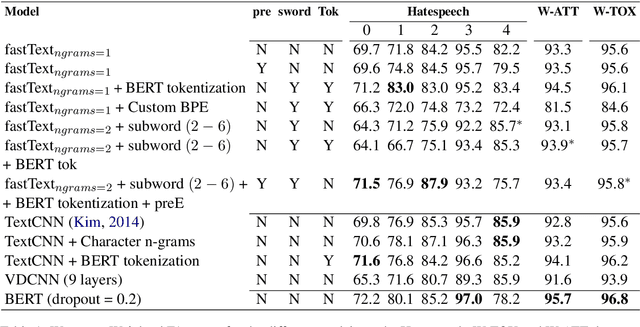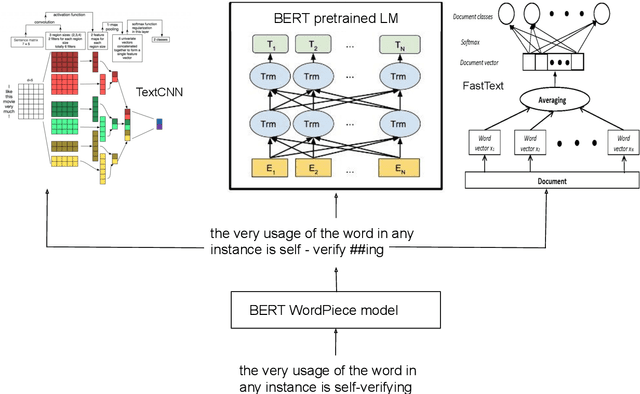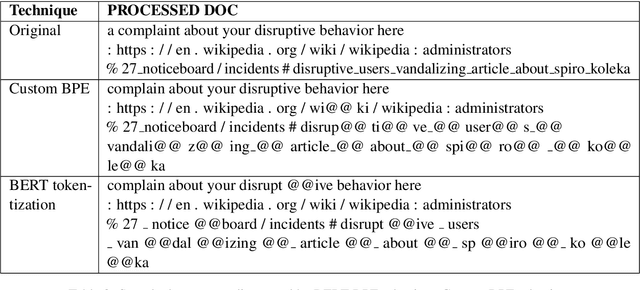Neural Word Decomposition Models for Abusive Language Detection
Paper and Code
Oct 02, 2019



User generated text on social media often suffers from a lot of undesired characteristics including hatespeech, abusive language, insults etc. that are targeted to attack or abuse a specific group of people. Often such text is written differently compared to traditional text such as news involving either explicit mention of abusive words, obfuscated words and typological errors or implicit abuse i.e., indicating or targeting negative stereotypes. Thus, processing this text poses several robustness challenges when we apply natural language processing techniques developed for traditional text. For example, using word or token based models to process such text can treat two spelling variants of a word as two different words. Following recent work, we analyze how character, subword and byte pair encoding (BPE) models can be aid some of the challenges posed by user generated text. In our work, we analyze the effectiveness of each of the above techniques, compare and contrast various word decomposition techniques when used in combination with others. We experiment with finetuning large pretrained language models, and demonstrate their robustness to domain shift by studying Wikipedia attack, toxicity and Twitter hatespeech datasets
 Add to Chrome
Add to Chrome Add to Firefox
Add to Firefox Add to Edge
Add to Edge